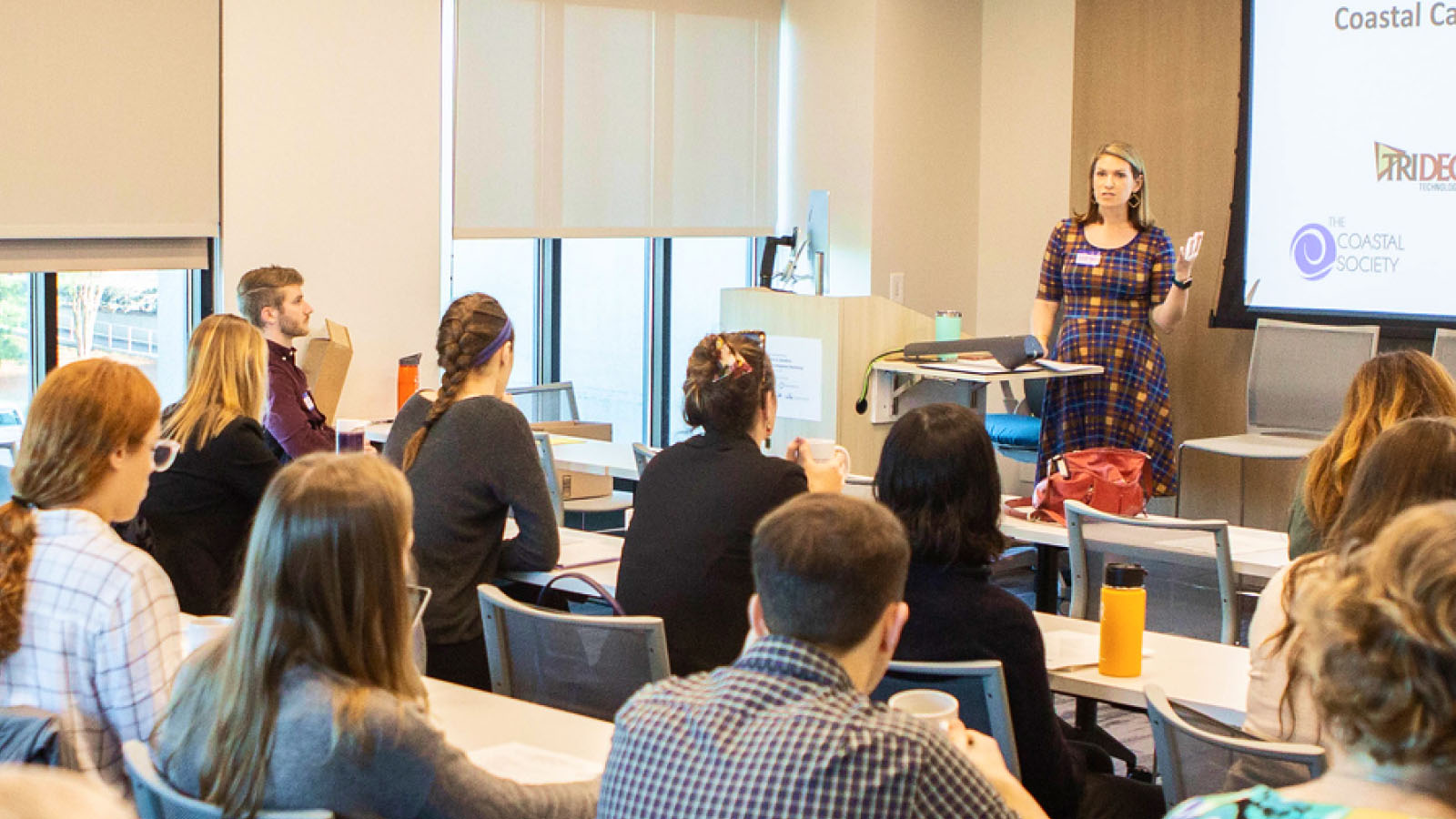The Takeaway: Learn how this community used environmental cleanup to change its image from dilapidated industrial zone to accessible recreational destination.
Overview
Find out how this community is changing its image by cleaning up and revitalizing its waterfront to offer residents and visitors an assortment of lakefront amenities.

Lessons Learned
- Create a working group to make progress and communicate better. Waukegan established a group made up of city, port, and state staff who help inform decisions. The group views everything through the lens of the community to ensure they are making progress and meeting the needs of community members. “It’s about supporting each other to get things done,” says Noelle Kischer-Lepper, City of Waukegan Director of Planning and Economic Development.
- Administration changes happen, keep making progress. Despite changes, Waukegan has a plan and a dedicated group of people focused on seeing that plan realized. This has made a big difference during times of change.
- Don’t sit on your hands. “You have to take the initiative, whether through planning or quickly understanding what assets you have and how to market to your audience’s needs,” shares David Motley, City of Waukegan Public Relations Director.
- Grants management is often overlooked. It takes time to manage grants. This can be challenging when you have limited staff with these skills. Be mindful of your needs, as well as your staff’s abilities and limitations.
The Process
The Waukegan Harbor and surrounding lakefront were once contaminated by a legacy of manufacturing activity. After decades of environmental remediation, the city and its partners are re-imaging Waukegan’s lakefront to meet the community’s vision for the future.
Lakefront Active Implementation Plan
In 2003, Waukegan developed a master plan. The community made some progress, but implementation fell short due to the economic downturn in the late 2000s, the complexity of the environmental cleanup, and the perception that Waukegan’s lakefront was industrial and contaminated.
In 2015, the City of Waukegan, in cooperation with the Waukegan Park District and Waukegan Port District, received funding from the Great Lakes Restoration Initiative through the Illinois Coastal Management Program. This funding allowed the city to hire the planning and design firm Edgewater Resources, LLC to create an active implementation plan as an effort to realize the vision of the original master plan. This plan honored the original plan’s vision, while also accounting for the community’s current needs and market conditions.
The resulting Lakefront Active Implementation Plan identified ways to overcome implementation barriers. The plan incorporated current concerns and explored why the master plan recommendations had not yet been realized. The plan included a list of economically viable and fully implementable recommendations and funding strategies, which empowered the city and its partners to take action. They promoted several themes to improve their waterfront: “Transforming challenges into opportunities;” “Focusing on things only Waukegan can offer;” and “Encourage, engage, and partner.”
The Waterfront Working Group includes City of Waukegan staff: Noelle Kischer-Lepper, Waukegan’s Director of Planning and Economic Development; David Motley, Public Events Director; and other city staff from the port and recreation districts. Also in the group are Joe Seidelmann, Waukegan Harbor’s General Manager, and Illinois Department of Natural Resources staff. The team is charged with implementing the recommendations from the Lakefront Active Implementation Plan.
Community Input
The city wanted to ensure that all stakeholders had input in the recommendations. They kicked off the planning process with an open house, which was attended by 125 people. Next, the Edgewater Resources team conducted stakeholder interviews with various people and organizations, such as the Waukegan Park District, Waukegan Port District, and businesses located in the lakefront area.
A third meeting was held to share ideas from the first round of community input sessions and to discuss market analysis results. Participants discussed a range of recommendations for Waukegan's Lakefront Active Implementation Plan. Attendees were shown photographs of various potential physical and programmatic improvements, and they voted on the improvements they felt were the best ideas.
“We’ve taken a multifaceted approach that is grounded in what our community members want,” says David, Director of Marketing and Public Relations.
Turning Challenges into Opportunities
Waukegan is transforming challenges into opportunities and focusing on what they can offer by improving the waterfront’s image. The goal is to turn Waukegan’s former weakness (industrial contamination) into a strength by leveraging the cleanup to create a uniquely sustainable community on the waterfront for residential and recreational activities.
The city is being proactive, acquiring properties and cleaning up sites that help improve the waterfront. They have also invested in infrastructure, such as parking lots and green stormwater projects, and have permitted changes that allow food trucks and summer concerts.
“The public perception of Waukegan, in general, was this somewhat dilapidated industrial area. It was just contaminated and left to the wayside,” Waukegan Harbor General Manager Joe Seidelmann says. “Since cleanups like the Great Lakes Restoration Initiative funding have come through, it’s turned into more of a public atmosphere, a place for visitors to come down and utilize Lake Michigan and the beaches and all the trails and waterways. It’s really a complete 180-degree turnaround.”
Focusing on Waukegan’s Unique Offerings
The city has a beautiful waterfront less than a half-mile from its downtown. It offers three miles of shoreline with a working port, marina, and popular sand beach. Waukegan is also enhancing the quality of life for residents and visitors. The waterfront area has multiple uses, from bird watching and nature hikes to kite boarding and various festivals.
“We are trying to make sure differing uses can happen in harmony,” David Motley, the city’s Public Relations Director, points out. “We want the waterfront to work for all ages, ethnicities, and income levels.”
Waukegan possesses a natural environment that exists in very few places in the world. Characterized by a freshwater "dune and swale" system adjacent to an upland bluff and ravine system, it can be seen in almost pristine condition in Illinois Beach State Park, immediately to the north of the project area. A goal of the plan is to enhance and expand this unique environment by building on Waukegan's remaining ecological assets and strengthening connections to Illinois Beach State Park.
Dune fencing will limit walking on dunes and protect sensitive habitats. Bioswales, a type of green infrastructure, are reducing stormwater runoff. Designated dune trails and interpretive signs are being developed to connect the different areas and help with access and education.
The city worked with community members to identify which activities they would like to see at the lakefront. Food trucks, yoga, and concerts are now part of the scene, as well as improvements to the swimming beach.
“People eat their lunch here, chill out, and bird watch. We even do a New Year’s Day polar bear plunge, where over 300 people jump in the lake and 800 come to watch. Our lakefront can be enjoyed all year long. It’s an amazing amenity and people want to be part of it,” shares Joe.
The port district has welcomed new regional businesses, attracted local residents for events like Earth Day cleanups, and, in the future, plans to open an ADA-accessible canoe and kayak launch as part of the Lake Michigan Water Trail.
One of the largest new attractions is a series of summer festivals along the waterfront. The Cinco de Mayo, Harbor Fest, Blues on the Water, Harbor-Q, and Fiestas Patrias events were all introduced in 2016, collectively attracting 20,000 people to the waterfront. Three of those events have become annual features and have seen steady increases in attendance. Many attendees are city residents who had never been to Waukegan Harbor before.
Encourage, Engage, and Partner
“Visitors and residents don’t care who owns what in the lakefront area, they just want the amenities and services,” says David. This belief is at the core of the waterfront working group. “We are all in this together, and have the same issues. It doesn’t matter whose project it is, we help each out so we can all make progress."
The working group consists of city, state, business, port district, and recreation district staff. Part of their success lies in meeting regularly to communicate about projects. “The idea is to help each other so we all get to our goal of revitalizing our community,” Noelle says.
Next Steps
“We are making good progress by leveraging resources and using the working group to help fill in gaps,” Noelle continues. Waukegan’s future work includes improving the drive to the lakefront. There are also several vacant industrial buildings still left, which will come down. The political will and community support is there.
“We will be able to find other uses for these properties that are more in line with what the community wants. Our actions are driven by all the planning we have done. We have stayed true to our vision and it’s working for us,” says David.
